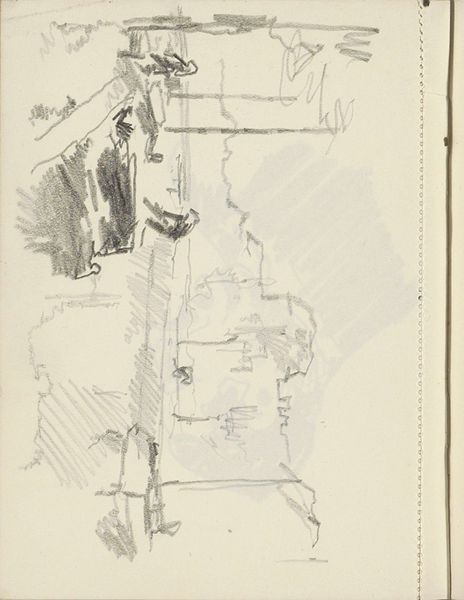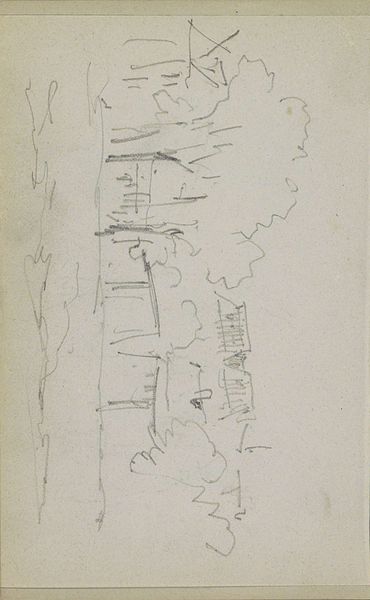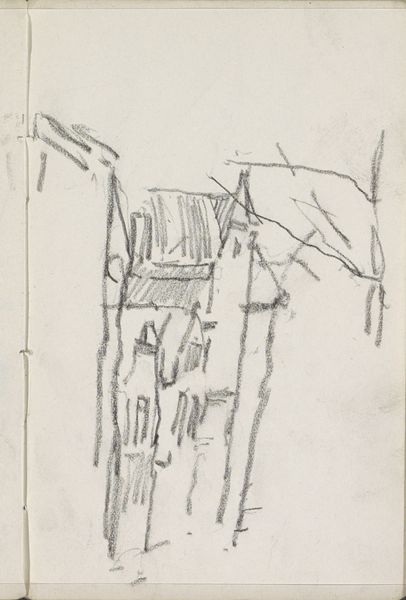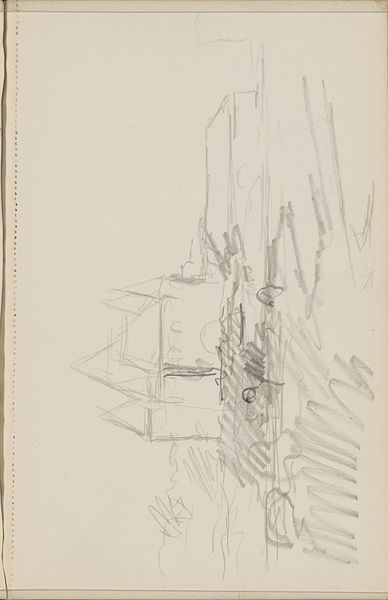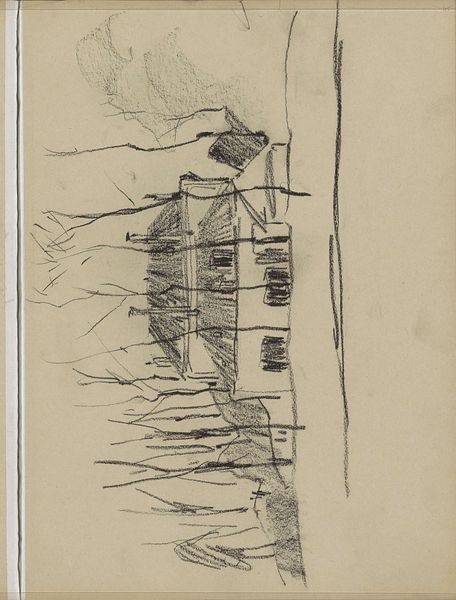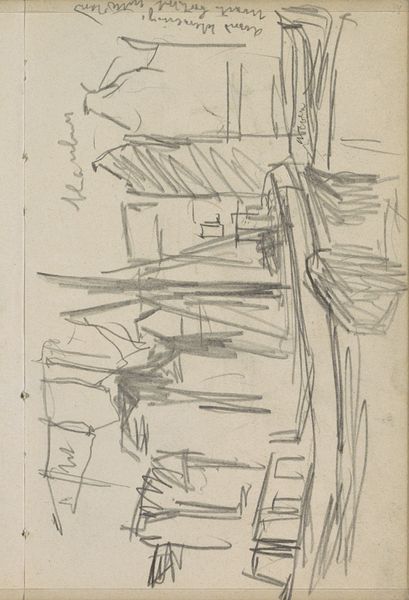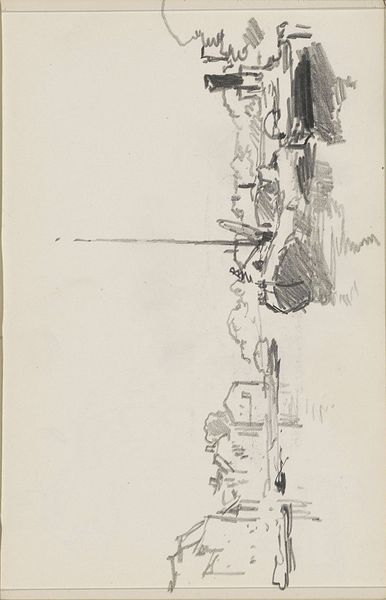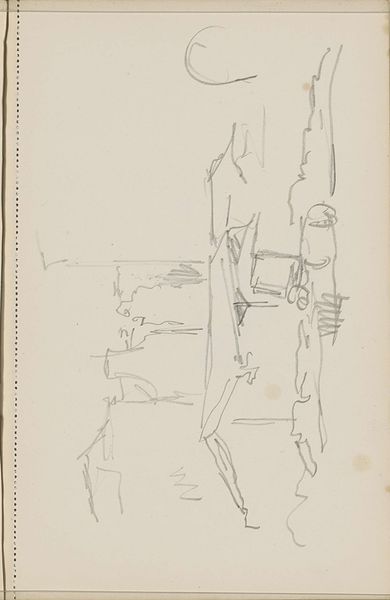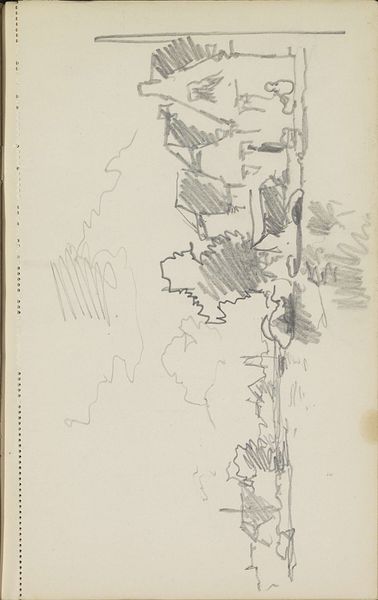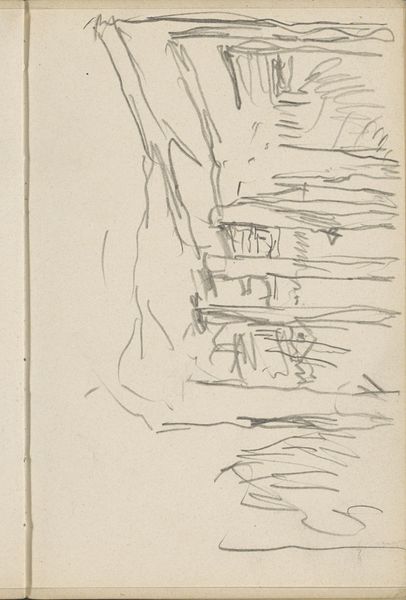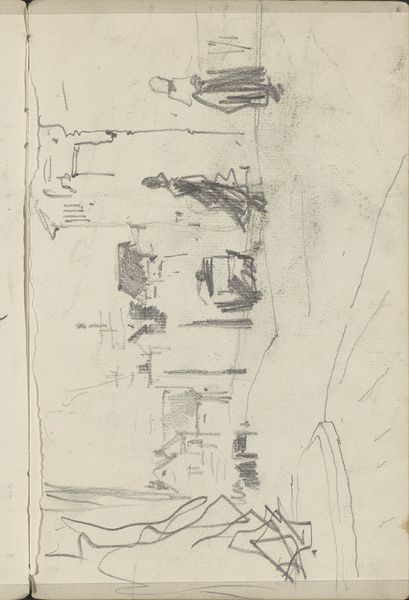
drawing, ink, pen
#
drawing
#
ink drawing
#
pen sketch
#
etching
#
ink
#
line
#
pen
#
cityscape
#
street
Copyright: Rijks Museum: Open Domain
Editor: Here we have Cornelis Vreedenburgh's "Straat met een rij huizen en bomen," a pen and ink drawing created sometime between 1890 and 1946. The loose lines give it such an ephemeral, fleeting quality. What do you make of it? Curator: It's interesting to consider this sketch within the broader context of urban development at the turn of the century. The quick, almost frantic lines, speak to the rapid transformation of the city itself. How might the burgeoning industrial landscape be influencing Vreedenburgh's representation of this street? Editor: That's a good question! It makes me think about how artists captured fleeting moments in time in rapidly changing cities. This work seems to point to not a stable structure but change. Curator: Exactly. And how would you relate that visual language to public perception? The choice to present the street in this way suggests perhaps a collective anxiety or excitement around urbanization. The Rijksmuseum's own collection policies inevitably shape our access to works such as these, by what standard is a work preserved, restored, or selected to be a part of the collection? How would those selections potentially influence public interpretation of historical trends? Editor: Wow, I never thought of that, especially about selection influencing historical trend interpretation. So, the very act of choosing to display it frames our understanding? Curator: Precisely! Every curatorial decision has that potential effect, so thinking critically about why this sketch is *here*, now, becomes vital. Editor: It adds a whole other layer to consider! It highlights how power structures intersect with what we think about even this little ink sketch. Thanks for highlighting this. Curator: My pleasure. Analyzing art always demands awareness of those very forces shaping our understanding.
Comments
No comments
Be the first to comment and join the conversation on the ultimate creative platform.
